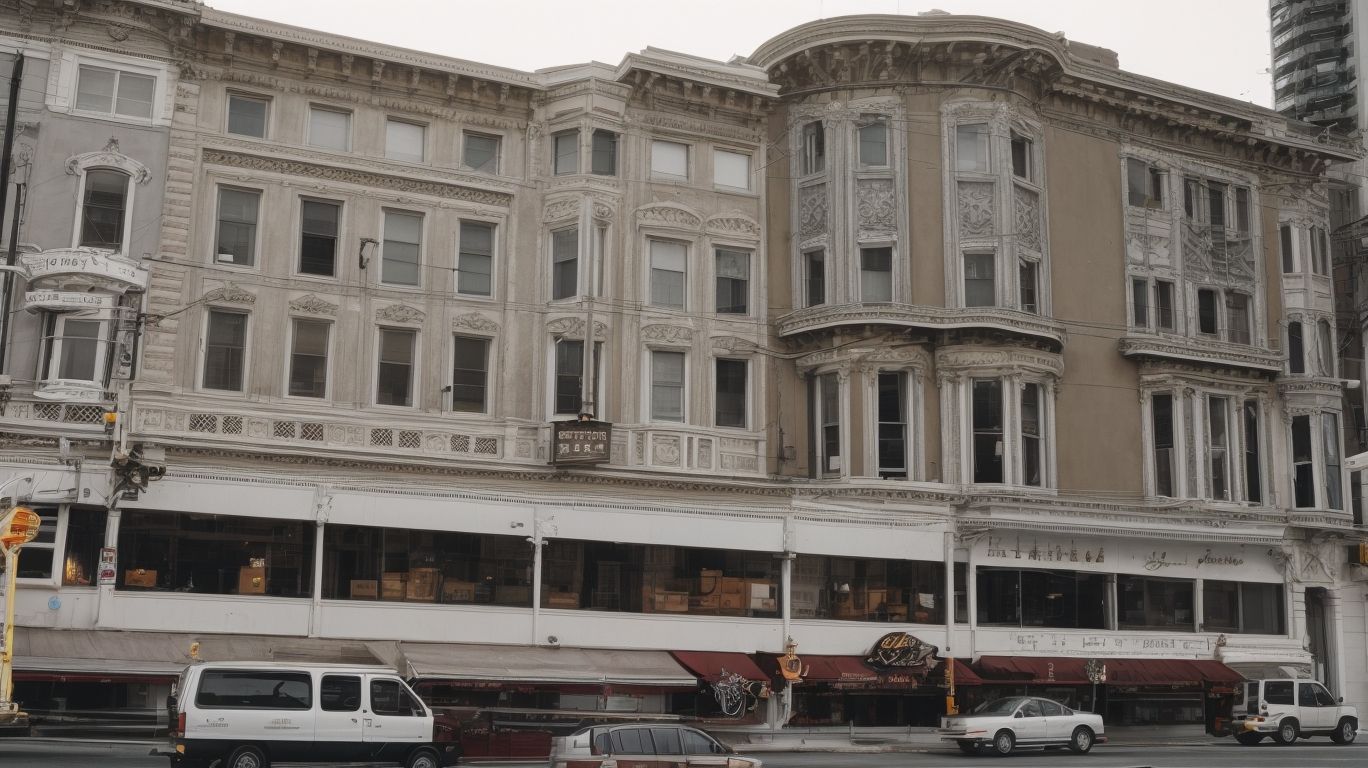
The Comprehensive Guide to Choosing a Retrofit Contractor in SF: What You Need to Know
Retrofitting is an essential process in San Francisco to ensure the safety and stability of buildings, especially in the face of seismic activity.
But finding the right retrofit contractor for your project can be a daunting task. This comprehensive guide covers everything you need to know about retrofit contractors in SF, from their qualifications to choosing the right one for your project.
We’ll also explore the steps involved in retrofitting a building and the common types of retrofitting projects in the city. Whether you’re a homeowner or a property manager, this guide will help you navigate the process of retrofitting with confidence.
What Is a Retrofit Contractor?
A comprehensive guide to choosing a retrofit contractor is essential for anyone looking to undertake a retrofit project. It is crucial to know the ins and outs of hiring the right contractor, including their experience, skills, licensing, and references.
When choosing a contractor, experience should be a top consideration. Look for someone who has a proven track record of successfully completing retrofit projects similar to yours. It’s important to ensure that the contractor has the necessary skills and qualifications to handle the complexities of a retrofit. Don’t forget to check for licensing and references to validate the contractor’s credibility and professionalism.
It’s also a good idea to get estimates from multiple contractors to compare their pricing and services before making a final decision. This will help you make an informed choice and potentially save you money in the long run.
Why Is Retrofitting Important in San Francisco?
Retrofitting holds significant importance in San Francisco due to the unique project requirements for residential and commercial properties, coupled with stringent regulations, safety standards, and the need for high-quality, cost-effective solutions within specified timelines.
The city’s seismic vulnerability necessitates retrofitting to enhance structural resilience against earthquakes, making it a critical consideration for building owners and developers.
The complex urban landscape and historic architecture further amplify the challenges in implementing retrofit projects, often requiring innovative engineering solutions to preserve the city’s cultural heritage while ensuring modern safety standards.
Navigating the regulatory landscape, including permit approvals and compliance with building codes, adds layers of complexity to retrofit endeavors, highlighting the intricacies involved in executing such projects effectively.
What Are the Qualifications of a Good Retrofit Contractor?
A good retrofit contractor should possess extensive experience, exceptional skills, proper licensing, established references, a solid reputation, a quality portfolio, positive testimonials, insurance coverage, bonding, warranties, and clear contracts and agreements, fostering trust and confidence in their work.
The qualifications and attributes of a reliable retrofit contractor play a crucial role in ensuring the success of any retrofitting project. An experienced contractor brings a wealth of knowledge and understanding of various retrofitting techniques and building codes, allowing for efficient and effective execution.
The possession of the necessary licensing and insurance provides assurance of compliance and protection against potential risks. Established references and a strong reputation demonstrate the contractor’s track record for delivering high-quality work and client satisfaction. Comprehensive warranties and transparent contracts signify a commitment to accountability and professionalism, further instilling trust in the contractor’s capabilities and integrity.
Proper Licensing and Insurance
Proper licensing and insurance are fundamental qualifications for a retrofit contractor, ensuring compliance with regulations, prioritizing safety, and upholding quality standards, ultimately fostering trust with clients.
Contractors play a crucial role in the industry by meeting specific legal requirements and providing insurance coverage for unexpected events. This assures clients of professionalism and reliability.
Compliance with regulations not only protects workers and the project, but also maintains the overall integrity of the construction process. Insurance coverage gives clients peace of mind, creating a secure and trustworthy partnership between contractors and clients.
Experience and Expertise in Retrofitting
Experience and expertise in retrofitting form the cornerstone of a reputable contractor. They showcase the skills, quality of work, established references, and positive testimonials that validate their capabilities and reliability.
Our team of experienced professionals brings a wealth of knowledge and practical skills to their craft. With their expertise, they are able to navigate even the most complex retrofitting projects with finesse, ensuring high-quality outcomes.
Our portfolio of successfully completed projects and glowing testimonials from satisfied clients serves as a testament to our reliable and consistent work. By engaging a contractor with a proven track record and extensive experience in retrofitting, clients can have confidence in the superior results and peace of mind throughout the process.
Familiarity with Local Building Codes and Regulations
Familiarity with local building codes and regulations in San Francisco is critical for a retrofit contractor, ensuring compliance, obtaining permits, prioritizing safety, and delivering high-quality work that aligns with legal requirements.
As a contractor, it is crucial to have a thorough understanding of the regulations and codes that govern construction in San Francisco. This knowledge allows for efficient navigation of the permit application process and ensures that all work meets the necessary safety standards.
By being well-versed in these local requirements, contractors can deliver high-quality work that adheres to legal obligations. This ultimately contributes to the overall integrity and safety of the built environment.
How to Choose the Right Retrofit Contractor for Your Project?
Choosing the right retrofit contractor for your project in San Francisco involves a systematic approach. This includes tips for hiring, evaluating work, obtaining estimates, managing budgets, making informed decisions, and utilizing checklists and recommendations to streamline the selection process.
Before starting your retrofit project in San Francisco, it’s crucial to research potential contractors and verify their credentials, licenses, and insurance. This ensures that they meet industry standards and legal requirements.
Additionally, it’s essential to seek referrals from trusted sources and review portfolios of their previous work. When obtaining estimates, be sure to ask for detailed breakdowns of costs and timelines.
Managing budgets involves clear communication and a thorough understanding of payment schedules. To make informed decisions, evaluate the contractor’s communication and problem-solving skills, as well as their ability to adapt to unexpected challenges.
Utilizing checklists and recommendations can also aid in comparing and contrasting different contractors, ultimately helping you make the best choice for your retrofit project in San Francisco.
Research and Compare Different Contractors
Researching and comparing different contractors in San Francisco is a crucial step in the selection process. This allows for thorough evaluation and consideration of recommendations to identify the most suitable candidate for the retrofit project.
Conducting thorough research can provide valuable insights into a contractor’s experience, previous projects, and customer testimonials. This information allows for a comparison of abilities and work quality, aiding in making an informed decision.
Utilizing recommendations from trusted sources or online platforms can also offer valuable insights into a contractor’s reliability and professionalism, ensuring a smooth and successful retrofit project.
Check for Certifications and Memberships
When evaluating a retrofit contractor, it’s crucial to check for certifications and memberships. These demonstrate the contractor’s commitment to quality, expertise, specialized credentials, and ongoing professional development within the industry.
Accreditations and affiliations serve as an assurance of a contractor’s adherence to industry standards and best practices. They indicate rigorous training and necessary skills for executing retrofit projects with precision and efficiency. These credentials also reflect a dedication to staying updated with the latest advancements and techniques in the field, ensuring high-quality and innovative solutions for clients. Therefore, it’s essential to ensure that a retrofit contractor holds relevant certifications and memberships for the overall success and satisfaction of the project.
Get Multiple Bids and Compare Costs
Obtaining multiple bids and comparing costs is a vital step in the selection process, enabling clients to evaluate the financial aspects of the project, make informed decisions, and select a contractor within their budget and timeline requirements.
This process allows for a comprehensive assessment of the affordability of the retrofit project. It ensures that clients can weigh the various proposals and select the most cost-effective option for their specific needs.
By receiving and analyzing multiple bids, individuals can gain insight into the range of costs and services offered by different contractors. This empowers them to negotiate and ultimately secure a contractor that aligns with their financial parameters and project timeline.
What Are the Steps Involved in Retrofitting a Building?
The steps involved in retrofitting a building encompass comprehensive project management, meticulous planning, precise execution, adherence to building codes, obtaining permits, complying with regulations, prioritizing safety and quality, and facilitating effective communication and collaboration throughout the process.
This involves thorough assessment of the building’s structural integrity, identifying energy-efficient solutions, selecting appropriate materials and technology, and coordinating with various stakeholders including architects, engineers, contractors, and regulatory authorities.
Ensuring compliance with environmental standards, sustainability requirements, and local ordinances is crucial. Project managers play a pivotal role in coordinating timelines, resources, and tasks to ensure seamless implementation. Effective communication channels and regular progress updates are essential for successful project execution and resolving any unforeseen challenges.
Assessment and Planning
The initial stages of retrofitting a building involve thorough assessment and meticulous planning, encompassing compliance with building codes and regulations, prioritizing safety and quality, and establishing effective communication for streamlined project timelines.
This critical phase of the retrofitting process ensures that the project adheres to the necessary standards and requirements, safeguarding the structural integrity of the building and the safety of its occupants.
By conducting a comprehensive assessment and meticulous planning, potential hazards are identified and addressed, while also paving the way for seamless coordination among stakeholders. The emphasis on compliance, safety, and quality not only meets regulatory obligations but also contributes to the long-term sustainability of the retrofit, minimizing future risks and ensuring a resilient structure.
Effective communication further facilitates swift decision-making, reducing delays and optimizing project timelines.
Obtaining Permits
Obtaining permits is a critical step in the retrofitting process, ensuring compliance with regulations, facilitating effective project management, planning, and upholding safety and quality standards throughout the construction phase.
Permits serve as a means of oversight and control, allowing authorities to monitor structural changes and ensure that retrofits meet safety and performance criteria.
They play a vital role in streamlining the construction process by providing clear guidelines and standards, ultimately contributing to the quality and longevity of retrofitted structures.
Without proper permits, there is a risk of compromising the structural integrity and safety of the building. It is imperative to adhere to necessary permitting processes for any retrofitting endeavor.
Structural Upgrades and Modifications
Implementing structural upgrades and modifications forms a pivotal phase of retrofitting a building, involving precise execution, adherence to building codes, prioritizing safety and quality, and comprehensive project management to ensure successful outcomes.
Upgrades and modifications are crucial for improving the structural integrity of a building. This is especially important for withstanding potential hazards like earthquakes, high winds, and other environmental stressors.
By implementing seismic retrofitting, reinforcing foundations, and enhancing load-bearing capacity, these structural improvements greatly enhance the building’s overall safety and resilience. They also ensure compliance with the latest building codes and standards, ensuring that the retrofitting project meets all regulatory requirements.
Effective project management is essential for seamlessly coordinating these structural modifications and integrating them into the overall construction process. This ensures high-quality workmanship and on-time delivery of the project.
Final Inspection and Certification
Conducting a final inspection and obtaining certification are crucial concluding stages of the retrofitting process, ensuring compliance with regulations, upholding safety and quality standards, and validating successful project management and execution.
The stages involved in retrofitting a structure are crucial in ensuring that it meets all safety and quality requirements, in line with industry standards and local regulations.
Final inspections and certifications serve as tangible proof of a successful retrofitting project, providing reassurance to stakeholders and the community. These steps are highly significant as they not only demonstrate regulatory compliance, but also contribute to the long-term resilience and durability of the retrofitted infrastructure. They are a vital aspect of risk management, ensuring that the retrofitting process is carried out effectively and the structure is deemed safe for use.
What Are the Common Types of Retrofitting Projects in SF?
In San Francisco, common types of retrofitting projects include soft story, foundation, and seismic retrofitting, catering to the diverse needs of residential and commercial properties, with a focus on sustainable, energy-efficient, and green building practices.
Soft story retrofitting is crucial in addressing the vulnerability of buildings with weak ground floors, especially in multi-story structures. Foundation retrofitting aims to strengthen the building’s support system, ensuring its stability during seismic events.
Seismic retrofitting involves upgrading structures to withstand earthquake forces. These retrofitting projects not only enhance safety but also align with the city’s commitment to sustainable and green building practices, promoting resilience and energy efficiency.
Soft Story Retrofitting
Soft story retrofitting addresses the structural vulnerabilities of buildings in San Francisco, particularly for residential and commercial properties. This approach focuses on seismic safety, compliance with regulations, and the promotion of sustainable, energy-efficient practices.
This retrofitting technique plays a crucial role in reinforcing buildings with weak ground floors, typically found in older structures. It aims to withstand seismic forces and ensure the safety of occupants.
By implementing soft story retrofitting, property owners not only enhance the resilience of their buildings but also contribute to the overall seismic safety of the community. It aligns with San Francisco’s commitment to sustainable, energy-efficient infrastructure, driving the city towards a more resilient and environmentally conscious future.
Foundation Retrofitting
Foundation retrofitting plays a critical role in strengthening the structural integrity of buildings in San Francisco. It focuses on seismic resilience, regulatory compliance, safety, quality, and efficient project management for both residential and commercial properties.
Foundation retrofitting is the process of modifying existing structures to make them more resistant to seismic activity. This is crucial in meeting the strict regulatory requirements set by building codes and regulations, ensuring the safety of occupants and preserving property quality.
Efficient project management in foundation retrofitting minimizes disruptions to daily operations of residential and commercial spaces, making it a valuable investment for property owners.
Seismic Retrofitting
Seismic retrofitting is instrumental in enhancing the seismic resilience of buildings in San Francisco. This encompasses regulatory compliance, safety, quality, and the integration of sustainable, energy-efficient, and green building principles for both residential and commercial properties.
Seismic retrofitting plays a crucial role in protecting structures and occupants from potential seismic hazards. Its purpose is to ensure that buildings can withstand the impact of earthquakes.
In addition to safeguarding lives and property, seismic retrofitting also helps properties meet building codes and regulations. This contributes to the overall safety and stability of communities.
The integration of sustainable, energy-efficient, and green building principles in retrofitting projects promotes eco-friendly practices and reduces environmental impact. This aligns with San Francisco’s efforts towards a more resilient and sustainable urban landscape.




No Comments